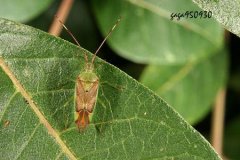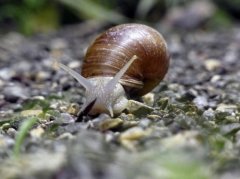Control methods of thrips: control methods of thistle pests Cao Dai small black flower stump elephants prey on thrips
Thrips: thrips generally suck juice in tender watermelons and flowers, causing watermelon growth points to atrophy, blacken, and even necrosis. It is so harmful, how can we do it so that we can prevent it well?
The harm of thrips to crops has become more and more serious in recent years. The individuals of thrips are very small and concealed, and they like to hide in the cracks of plants. There are different kinds of thrips in flowers, vegetables, fruit trees and so on. Among them, yellow thrips in the south have the most extensive hosts, which cause serious damage to melons, eggplant, green peppers and other crops. In addition to direct piercing harm, they also spread virus diseases. Causing great losses in agricultural production.

Thrips are very difficult to control. At present, spraying chemical pesticides is the main control method. Because the original drug resistance of thrips is high, the control effect is not obvious, and it is easy to produce residual poison problems. At present, there is an urgent need to study and provide effective natural enemies, which will be released in the field for control after mass reproduction. The small black flower stump elephant is the main predator in the agro-ecosystem. It often preys on high-value crops and has a strong inhibitory effect on thrips. According to American records, Toona sinensis often occurs in corn, soybean, alfalfa, wheat, cotton, potato, tomato, apple, strawberry, apricot and walnut and other large and high-priced crops, preying on its main pests and pests . The life history of Toona sinensis is only about 20 days, and its vitality is strong, and its predation can not be ignored. It is the most potential natural enemy for biological control of all predators.
Caodai small black flower pile elephant is the most common flower pile elephant in this province, which can prey on thrips, aphids, leaf and other small pests. It takes 14 days for nymphs to develop at 26 degrees indoor temperature, and the survival rate of nymphs is more than 70%. During their development, nymphs can average prey on thrips or leaf 1 ~ 150. the life span of adults is 30 days and continues to prey every day. Statistics show that they can prey on thrips 238-306 or leaves 508-632 in their lifetime, with strong activity and large food intake in each stage. Adults like to drill into the petals to prey on thrips in flowering season. At present, mass feeding is being tested, hoping to improve the survival rate of adults, shorten the development period, prolong the life span of adults to increase the number of eggs to achieve the most economical reproductive efficiency, and will be released in the field to evaluate the actual effect on thrips. If the control effect is good, mass reproduction will be carried out for farmers to use.
- Prev

Blind Toona sinensis: the occurrence of blind Toona sinensis on crops and the control of bamboo blind stink weevil
Bamboo blind stink bugs, you must know this kind of pest. Then how to prevent it and eliminate its harm to agriculture? Let's take a look at it. At present, pesticide control can still effectively control bamboo blind stink bugs, but it is not suitable for pesticide control during the continuous bamboo shoot picking period (April-October).
- Next

Prevention and control of grape diseases and insect pests: control methods of flat snails for grape pest control
Prevention and control of flat snails in vineyards: there are also many diseases and insect pests in grapes. today, let's first learn about the prevention and control of snails. The flat snail in vineyard is an important pest of grape, and the traditional control methods are not effective. 95-100% of flat snails can be controlled by using the bottle method.
Related
- A one-day flower show brings 130 million yuan in orders! Nanhai, this Phalaenopsis exhibition is amazing
- What do the flower language and meaning of Lutheran tree mean? Precautions for planting Lutheran tree
- Encounter Chaoshan Kongfu tea, not without this cup of Phoenix single clump
- The durian market in Vietnam and Thailand is flooded. The price of imported durian has plummeted by 30-40% in a month.
- Shanghai solved the problem of local vegetable supply by planting 80,000 mu of green leafy vegetables.
- Wageningen University has become the best agricultural university in the world for the seventh time in a row.
- The strongest export season of South African grapes is full of challenges, with exports to Russia falling sharply by 21%.
- Sri Lanka is on the verge of bankruptcy, "Tea for debt" Organic Agriculture Revolution aggravates the Food crisis?
- Turning waste into earthworm manure and worm manure into organic fertilizer-A new choice for auxiliary farming
- Organic rice growers shoulder the responsibility of nurturing agricultural talents! Yinchuan Sustainable Farm with Organic Life Camp

